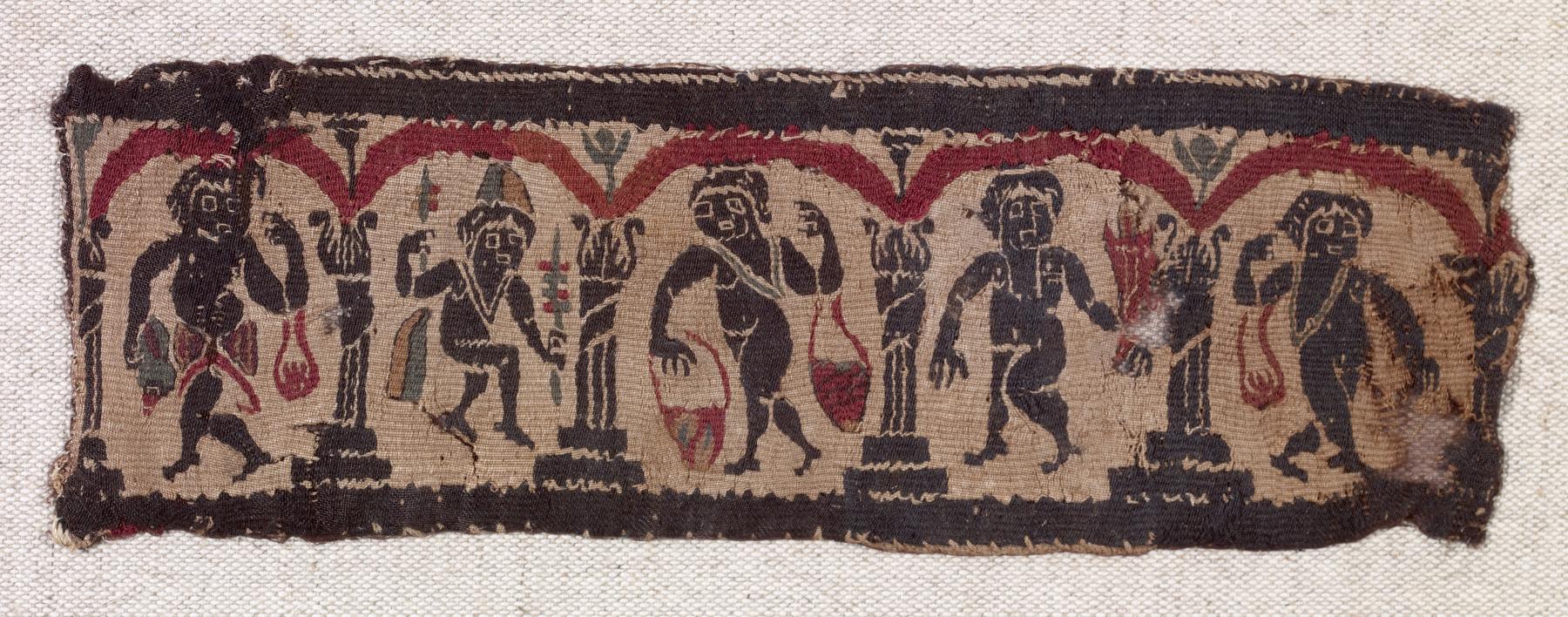Garment Decoration ("Segmentum") with Figures Under an Arcade
The popularity of the cult of Dionysus, which was initially introduced to Egypt by the early Ptolemy rulers in the 3rd century BC and continued into early Byzantine times (4th-7th century), resulted in numerous textiles, such as this garment panel featuring Dionysiac themes. The "segmentum" (ornamental tunic patch) depicts dancers involved in what was probably intended to be a Dionysiac dance to celebrate regeneration and rebirth. The commonly used grape vine border, which frames the central portion of the panel, also acts as an allusion to Dionysus and to renewal and prosperity associated with him.
Provenance
Provenance (from the French provenir, 'to come from/forth') is the chronology of the ownership, custody, or location of a historical object. Learn more about provenance at the Walters.
Henry Walters, Baltimore [date and mode of acquisition unknown]; Walters Art Museum, 1931, by bequest.
Exhibitions
| 2014 | Seeing Music in Medieval Manuscripts. The Walters Art Museum, Baltimore. |
Conservation
| Date | Description | Narrative |
|---|---|---|
| 5/13/2013 | Examination | Examined |
Geographies
Egypt (Place of Origin)
Measurements
Overall H: 15 13/16 x W: 13 11/16 in. (40.2 x 34.8 cm); Left fragment (A) H: 15 3/4 x W: 1 9/16 in. (40 x 3.9 cm); Top fragment (B) H: 4 x W: 12 3/16 in. (10.2 x 30.9 cm); Bottom fragment (C) H: 3 1/8 x W: 9 7/16 in. (8 x 24 cm); Right fragment (D) H: 11 x W: 1 9/16 in. (27.9 x 4 cm)
Credit Line
Acquired by Henry Walters
Location in Museum
Not on view
Accession Number
In libraries, galleries, museums, and archives, an accession number is a unique identifier assigned to each object in the collection.
In libraries, galleries, museums, and archives, an accession number is a unique identifier assigned to each object in the collection.
83.485






